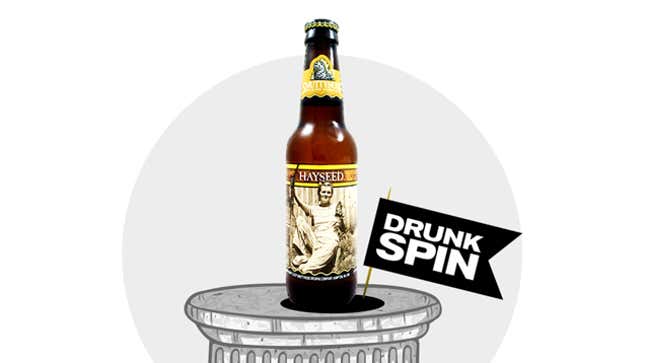
Earlier this week, an employee of Colorado’s Caution Brewing Company threw his job to the wind via an angry and profane letter to Evil Twin Brewing in which he chastised the Brooklyn-based contract brewer for their high prices. Evil Twin posted the letter on their Facebook page, prompting Caution’s head brewer to apologize for his employee’s unauthorized rant. The whole thing was pretty fun.
The guy’s got a point—Evil Twin beer is awfully pricey—but I’m not sure why he felt the need to make it. Tons of modern life’s optional luxuries are harmlessly overpriced, and we boring, sane folk just ignore them. But this guy needed to get 900 words’ worth of rage off his chest, which I guess I can respect. I still don’t understand why he felt obliged to identify his employer, but truly righteous indignation tends to follow its own path. I hope he still has a job.
One part of his screed struck me as ill-informed, though. In more than one instance he implied that lower-alcohol beers should cost less than stronger ones. This seems to betray a lack of understanding of his trade. I don’t know all the intricacies of beer production, but I’m nearly certain that the alcohol just kinda magically appears along the way; it’s not a cost-incurring additive. The beautiful minds behind the $2 40-ounce of Steel Reserve High Gravity (8.1-percent ABV) aren’t selling it at a loss.
But even if price doesn’t always correlate to potency from a production perspective, it’s not unreasonable for a consumer to consider the relationship. Beer’s expensive, man. Especially at bars, which is where I do the majority of my leisure drinking. So while I am all for the concept of session beers, I have an unofficial 4-percent floor for a $7 pint of beer. I realize this outs me as one of those thoughtless savages who drinks beer at least partially for its intoxicating affects, but so be it. Just last night, I found myself with time to sneak away for one quick beer before dinner. I went to the brewpub around the corner, where they had two of my favorites on tap, an 8.5-percent Belgian double IPA and a 6.5-percent sour. I went with the boozier option. Alcohol content is never the sole determinant, but when all other things are equal, I will bang my buck as hard as possible.
This is why I have mixed feelings about recommending Smuttynose’s outstanding Hayseed, a grisette they call “a country table beer” and I call a dirty rotten goddamn trick of a 3.8-percent sorta-saison. I doubt I would have ordered it if I’d known it was appreciably weaker than Bud Light, but I’m begrudgingly glad I did, because it’s the best sub-4-percent beer I can remember trying.
Grisettes are essentially lower-alcohol versions of saison. They’re Franco-Belgian and have that same dry, peppery, effervescent yeastiness, with the primary distinction being that grisettes were traditionally brewed for the miners, who apparently couldn’t be trusted with as strong a brew as the saison-swilling farm hands.
Hayseed pours a pretty pale yellow with tons of tiny bubbles; it almost resembles sparkling wine. It has a rich, earthy aroma of dried leaves and mulch, with moderate clove, lemon, and black pepper accents. There’s a nice touch of apple and wheat on the palate, too. Hayseed is a pretty intricate beer, which is why it’s the first and quite likely last 3.8-percenter to get Drunkspin’s unqualified endorsement.
This is Drunkspin Daily, the Concourse’s adequate source for booze news, reviews, and bullshit. We’ll be highlighting a beer a day in this space; please leave suggestions below.
Image by Jim Cooke.
Will Gordon loves life and tolerates dissent. He lives in Cambridge, Mass., and some of his closest friends have met Certified Cicerones. Find him on Twitter @WillGordonAgain.